8 countries where a skirt is a sign of masculinity
Categories: Fashion | Nations | World
By Pictolic https://pictolic.com/article/8-countries-where-a-skirt-is-a-sign-of-masculinity.htmlWe are all used to the fact that a man in a skirt is certainly a Scot. But, it turns out that this item of clothing is worn by representatives of the stronger sex in other countries. If in Scotland the kilt is only the national dress, then in some places of the world the wearing of skirts is in certain cases mandatory, and in some places even prescribed by law.
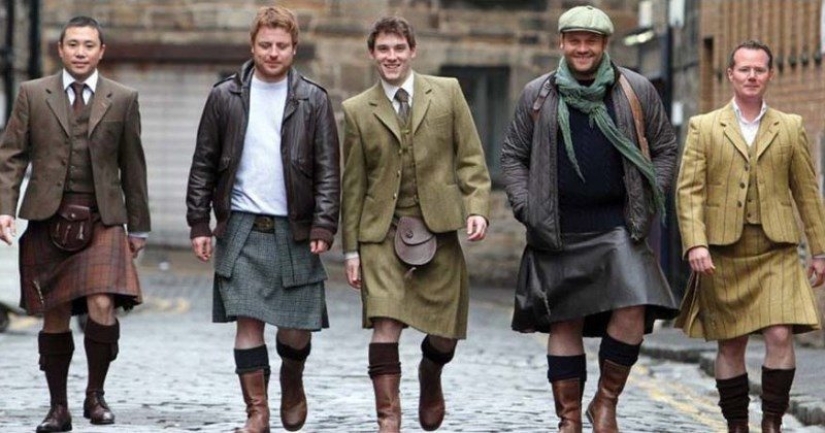
It just so happened that men began to wear skirts much earlier than women, and it was this piece of fabric around the waist that for many centuries in different parts of the world was a symbol of masculinity. Today, such an attitude to this item of clothing is not preserved everywhere, but there are 8 places on the planet where the wearer of a skirt will definitely not cause any questions.
Of course, it is worth starting the story about men's skirts with Scotland. Today, you can easily walk in a kilt in Edinburgh and Glasgow, and in other cities of the UK, the Scottish national costume will be perceived calmly. Despite this, the kilt is worn infrequently-mainly for weddings and official receptions.
The Scottish kilt has a thousand-year history, and by its color you can find out where the man comes from and what clan he is from. These clothes are made of a checkered wool material, now known as"tartan". Technically, a kilt is the lower part of a large kilt, that is, a hiking blanket with a length of 5.5-6 meters. In such a piece of cloth, the Scottish Highlander, if necessary, could wrap himself completely.
The gho robe, which is official dress in Bhutan, is worn with knee-length socks and a special kabni scarf. The invention of such a costume is prescribed by Shabdrung Ngawang, who founded this mountain state in the XVII century. According to this statesman, the gho emphasizes the identity of the Bhutanese people.
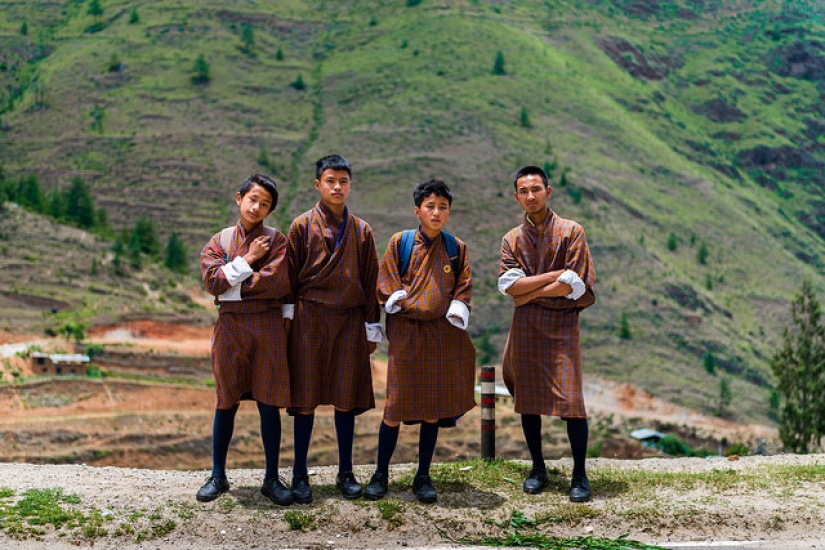
The carrying of ghos in the country is mandatory in many cases. In particular, all schoolchildren and employees of state institutions wear these clothes. Wearing this piece of clothing is not easy. and not every adult man copes with such a task without help.
Traditional men's clothing in Burma-paskhou, is a piece of fabric 2 meters long and 0.8 meters wide. It wraps around your thighs and ties in a knot on your stomach. Women's skirts are arranged in the same way, only fix them by tucking them on the side.
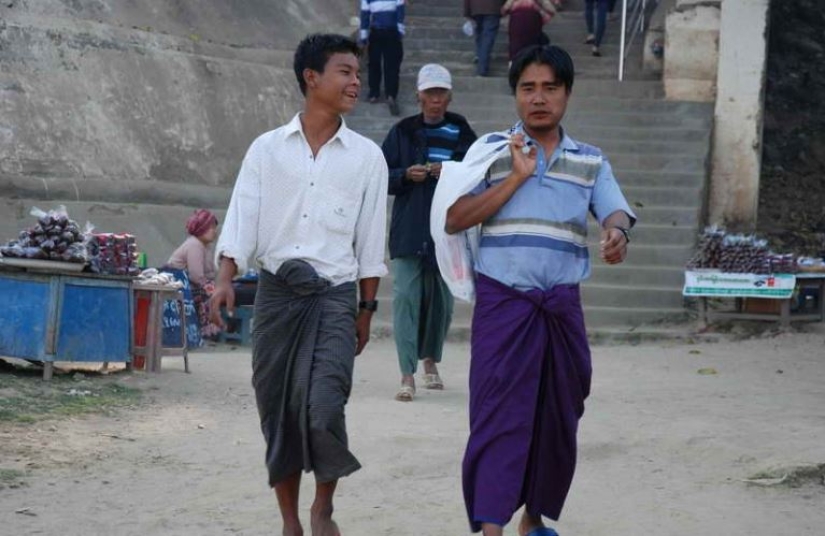
Paskhou is made from cotton fabrics of not too bright colors. This skirt is very comfortable to walk in and not hot in the summer. If the hem interferes with the performance of any work, it is passed between the legs and attached to the belt, getting improvised spacious shorts.
In Morocco, a long robe with a hood-djellaba, is both men's and women's clothing. There are two types of this garment — ordinary, made of cotton fabric, and insulated-made of wool. Djellaba protects against cold, heat, wind, dampness and even sand.
It is not uncommon to see Moroccans using the pointed hood of their clothing as a bag. The color of the djellaba is not chosen by chance — white robes are worn on solemn occasions, and if you see a man in a brown robe, you can be sure that he is not married.
Back in the XIX century, the fustanella skirt was a sign of special masculinity. In Greece, this clothing was an indispensable part of the military uniform for several centuries, and today you can see this vestment on the evzons-guards, who are so fond of photographing tourists during the changing of the guard.
Fustanella is quite complicated. This double-layered wool skirt has 400 pleats, each of which symbolizes a year spent under the Ottoman yoke. By the way, the Greek guards themselves iron the fustanelles, and the charter prescribes this to be done daily.
The Hajj is a very important event in the life of every Muslim, and a special wardrobe is required for this. Ihram is a men's clothing designed specifically for the pilgrimage to Mecca. The ihram consists of two pieces of white cloth, one of which is fastened around the waist, and the second is thrown over the shoulders.
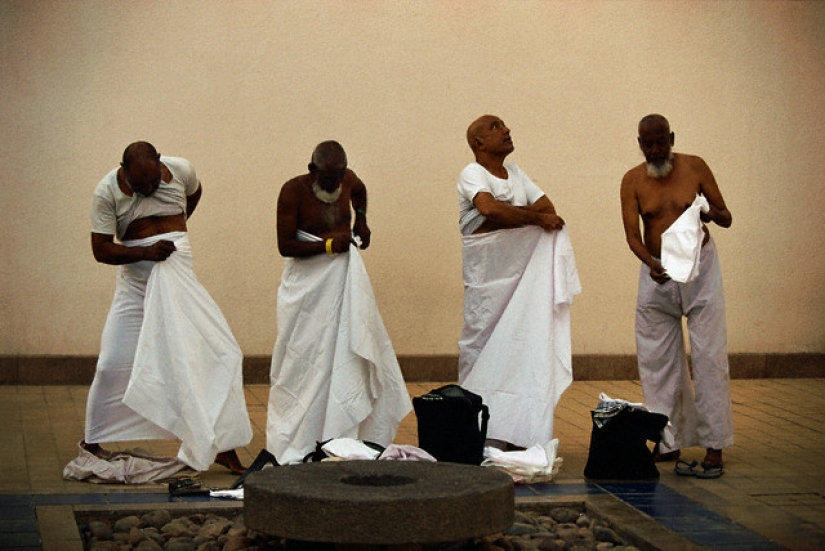
The main purpose of ihram is to demonstrate the unity of the faithful and their equality before Allah. In fact, it is simply impossible to distinguish a beggar from a billionaire sheikh in the courtyard of the sacred Masjid al-Haram mosque.
On the islands of the Fiji archipelago, men began to wear skirts relatively recently — in the XIX century, after colonization by the British. Before that, men on the fertile tropical islands did without clothes at all. The first to dress in sulu were the new converts to the Christian faith of the islanders, to emphasize their difference from the pagans.
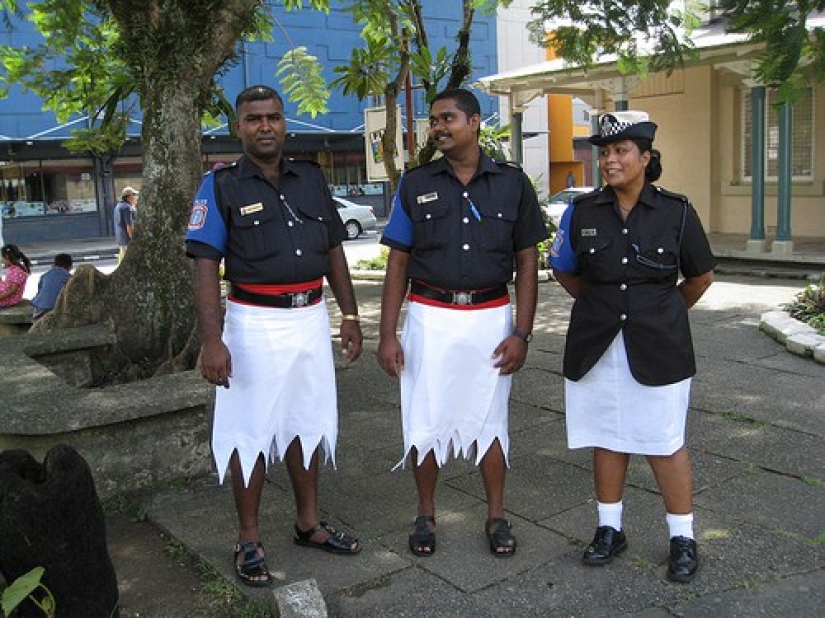
Sulu skirts usually have a length just below the knee, but no one forbids wearing models up to the ankle. Sulu is a mandatory uniform worn by the military, police, and school children. Also, this piece of clothing is a mandatory dress code in public institutions.
Today, the hakama skirt-pants in Japan can be seen in martial arts halls and museums, as well as during demonstration tea ceremonies. This ancient men's clothing appeared in the land of the Rising Sun in the VI century — it, like much else, was imported from neighboring China.
The hakama has 7 folds, five of which are located in the front and two in the back. Some believe that these numbers are taken from the Samurai code of honor, according to the number of virtues, however, most likely, this detail is of purely practical importance, since it compensates for the different width of the step with the right and left foot. To fold the hakama in all the folds and not to crumple it is a real art that needs to be mastered long and hard.
Keywords: Men | Clothing | Skirt
Post News ArticleRecent articles

We present you a selection of amazing beaches — but today these are not standard holiday destinations, but really unusual places. ...

Aerial photographer cronista johnny Miller demonstrate dramatically the gap between rich and poor in cities of South Africa, Mexico ...
Related articles

Most women love to go shopping and shopping in boutiques. For some, shopping turns into a real addiction that you need to fight. ...

What do we women have to endure in the name of fashion? What sacrifices we are not forced to make to look beautiful, modern and ...

Gillian Owens is a writer and designer who decided to slightly modify the ideas of modern fashion. Faced with financial troubles ...

On April 22, 1923, Bettie Page was born in Nashville, who became a sex symbol throughout the country in the middle of the century. ...